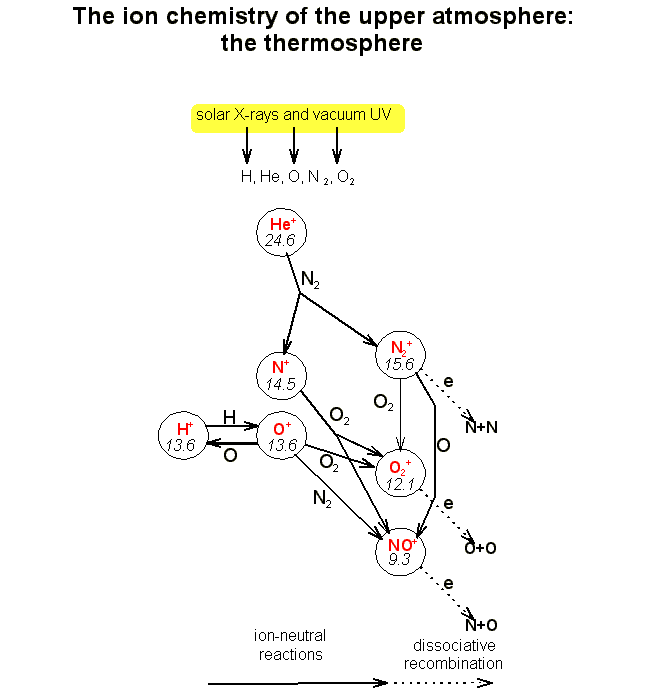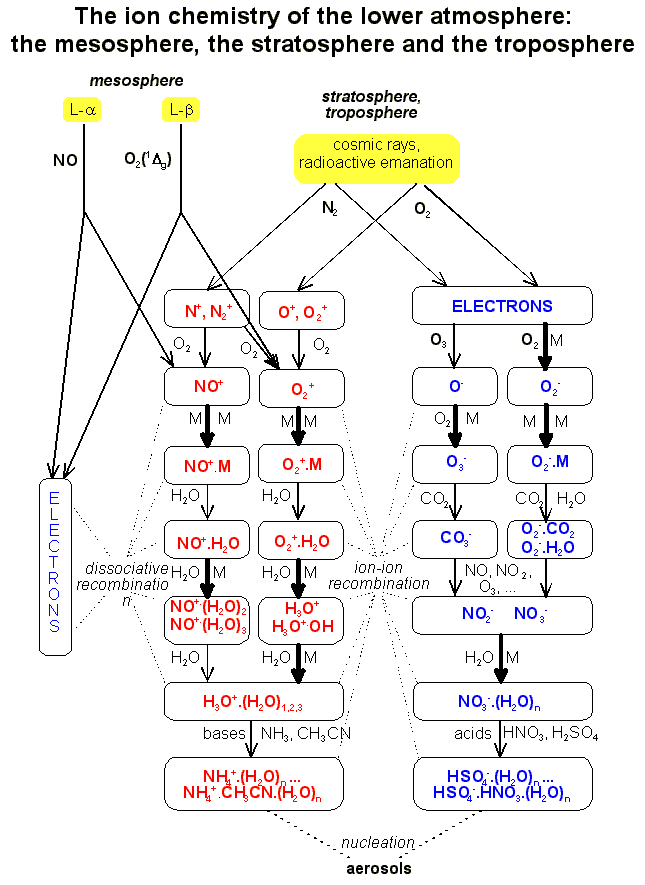Ion chemistry of the terrestrial atmosphere
A detailed discussion of the reaction processes included here is presented in a review:
D. Smith and P. Spanel, "Ions in the Terrestrial Atmosphere and in Interstellar Clouds",
Mass Spectrometry Reviews, 14 (1995) 255-278.
 |
The profiles of the total positive ion number density, n+, (red curve) and of the total negative number ion density, n-, (blue dashed curve) are shown here together with typical profiles of the number densities of the various positive ion types. The electron number density, ne, is equal to n+ in the absence of negative ions (above 90 km, in an electron-ion plasma, E- and F-regions). In the lower atmosphere, where negative ions do exist, ne=n+-n- , the ledge designated as the D-region is largely due to the selective ionisation of NO by solar Lyman- radiation. There are no free electrons in the stratosphere and the troposphere (where n+=n- in an ion-ion plasma). |
 |
| The ionic species are arranged from the top to the bottom of the diagram in order of their reducing recombination energy (given in eV for each ion). The solid arrows indicate the reactions that are occurring with the neutral reactants (indicated along the arrows), and the dashed arrows indicate dissociative recombination with electrons. |
 |
| The positive (red) and negative (blue) ion chemistry of the lower atmosphere (the mesosphere, the stratosphere and the troposphere). Two body ion-molecule reactions and electron attachment reactions are indicated by thin arrows, three body ion-molecule reactions are indicated by thick arrows where M represents a third body (N2 or O2). The neutralisation processes of electron-ion (dissociative) recombination and ion-ion recombination are indicated by dashed lines. Note the different sources of ionisation in the different regions of the lower atmosphere indicated in the uppermost part of this scheme. The terminating ions in the mesosphere are of the type H3O+(H2O)1,2,3 and NO3_.(H2O)n, whilst the ion chemistries of the stratosphere and the troposphere progress further into the more complex ions indicated in the lowest part of this scheme. |
A detailed discussion of the reaction processes included here is presented in a review:
D. Smith and P. Spanel, "Ions in the Terrestrial Atmosphere and in Interstellar Clouds",
Mass Spectrometry Reviews, 14 (1996) 255-278. | 


